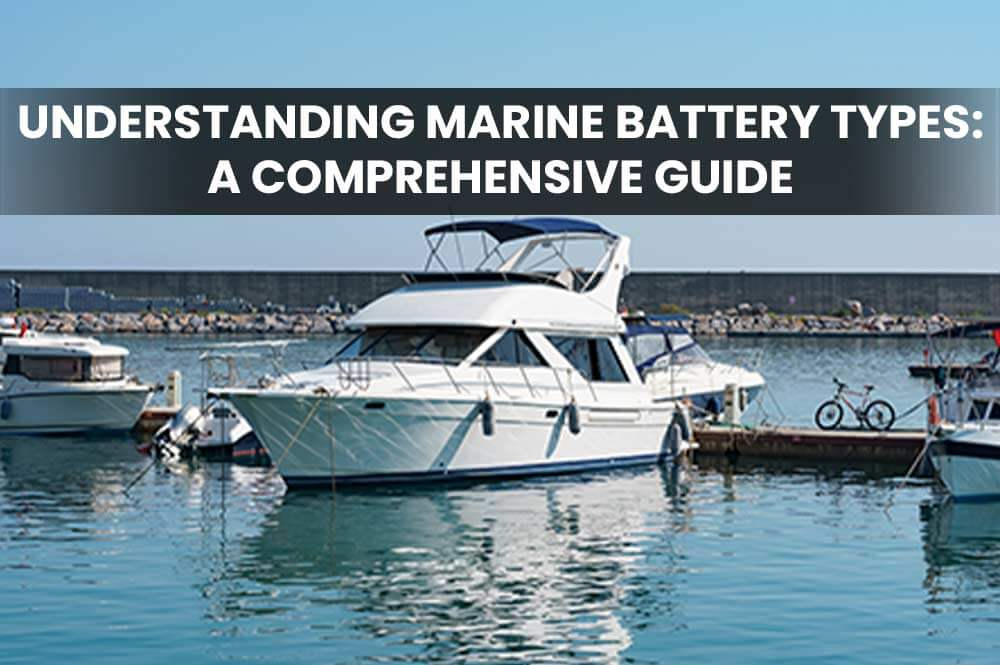Understanding Marine Battery Types: A Comprehensive Guide

Marine batteries play a crucial role in ensuring the safety and comfort of your boating experience. With the variety of marine battery types available in the market, choosing the right one can be a challenging task. In this article, we aim to provide a comprehensive guide to help you make an informed decision.
The Three Basic Types of Marine Batteries
Marine batteries play a crucial role in powering the electrical systems and devices on boats and ships. When choosing a marine battery, it is important to understand the different types available and their respective features. In this article, we will discuss the three basic types of marine batteries: Flooded Lead-Acid, Sealed Lead-Acid, and Lithium-Ion.
Flooded Lead-Acid Batteries
Flooded Lead-Acid batteries, also known as wet cell batteries, are the most traditional type of marine battery. They consist of lead plates immersed in a sulfuric acid and water electrolyte solution. These batteries are durable, affordable, and widely available. They are commonly used for starting engines and powering electrical systems on smaller boats. However, they require regular maintenance and can spill or leak if not handled properly.
Sealed Lead-Acid Batteries
Sealed Lead-Acid batteries, also known as maintenance-free batteries, are similar to flooded lead-acid batteries with the difference that the electrolyte is suspended in a gel or absorbed in a fiberglass mat. This design eliminates the need for regular maintenance and reduces the risk of spills and leaks. Sealed Lead-Acid batteries are a convenient and reliable choice for marine applications.
Lithium-Ion Batteries
Lithium-Ion batteries are a newer technology that has become increasingly popular in recent years. They are lighter and more compact than lead-acid batteries and offer higher energy density, faster charging, and longer lifespan. Lithium-Ion batteries are commonly used for powering high-end marine electronics, such as GPS and sound systems, as well as for electric propulsion systems on larger boats.
Marine Battery Types By Chemistry
The marine industry has a wide range of batteries available for different applications, and each type of battery has its own unique chemistry. Understanding the different chemistries of marine batteries can help boat owners make informed decisions about which battery is best for their needs. In this article, we will discuss the most common types of marine batteries by chemistry: Lead-Acid, Nickel-Cadmium, Lithium-Ion, and Lithium Iron Phosphate.
1. Lead-Acid Batteries
Lead-Acid batteries are the most traditional type of marine battery and have been used in the marine industry for over a century. They consist of lead plates submerged in a sulfuric acid and water electrolyte solution. Lead-Acid batteries are available in two forms: Flooded Lead-Acid and Sealed Lead-Acid. Flooded Lead-Acid batteries require regular maintenance and can spill or leak, while Sealed Lead-Acid batteries are maintenance-free and spill-proof. Lead-Acid batteries are affordable, durable, and widely available, making them a popular choice for marine applications.
2. Nickel-Cadmium Batteries
Nickel-Cadmium batteries, also known as NiCad batteries, are another type of marine battery that has been used for many years. They are known for their high energy density, long cycle life, and low self-discharge rate. However, Nickel-Cadmium batteries are also expensive, heavy, and not as widely available as Lead-Acid batteries. These batteries are typically used in specialized applications, such as electric propulsion systems on large boats.
3. Lithium-Ion Batteries
Lithium-Ion batteries are a newer technology that has become increasingly popular in recent years. They offer several advantages over traditional Lead-Acid and Nickel-Cadmium batteries, including higher energy density, faster charging, and longer lifespan. Lithium-Ion batteries are lighter and more compact than Lead-Acid batteries, making them ideal for powering high-end marine electronics, such as GPS and sound systems. They are also commonly used for electric propulsion systems on larger boats.
4. Lithium Iron Phosphate Batteries
Lithium Iron Phosphate batteries, also known as LiFePO4 batteries, are a type of Lithium-Ion battery that offer a number of benefits over other Lithium-Ion chemistries. LiFePO4 batteries have a longer lifespan, better thermal stability, and higher safety than other Lithium-Ion batteries. These batteries are ideal for applications that require a stable and reliable power source, such as marine electronics and electric propulsion systems.
Choosing the Right Marine Battery
When choosing a marine battery, it's essential to consider factors such as your boat's power needs, the size and weight of the battery, and your budget. If you have a larger boat with a high power demand, a lithium-ion battery may be the best option. For smaller boats or those with a lower power demand, a lead-acid or AGM battery may be more suitable.
Conclusion:
Understanding the different types of marine batteries and their features will help you make an informed decision when purchasing a battery for your boat. Whether you prioritize cost, weight, maintenance, or energy density, there's a marine battery that's perfect for your needs.
Shop marine batteries from Batteries Store.